St. Josaphat’s Ukrainian Catholic Church – Rochester, NY
A visit to the Ukrainian Festival and Saint Josaphat’s Ukrainian Catholic Church in Rochester
by Chris Clemens
Disclosure: When talking about religion and history, often times there are two sides (or more!) to be told. Depending on your beliefs or national heritage, you may agree or disagree with the following historical account. I am neither invested in the Roman Catholic Church nor the Eastern Orthodox Church. This is an attempt to tell an objective story about St. Josaphat. His life and legacy is sewn tightly into the weave of the Great Schism, which admittedly is a divisive story.
It’s okay to disagree with any of what appears here. I invite you leave a constructive comment sharing an alternate version.
Becoming Saint Josaphat
St. Josaphat was actually born Ioann (John) Kuntsevych in either the year 1580 or 1584 CE in what is currently known as the Ukraine.
At that time, the Great Schism had separated regions into followers of the Roman Catholic Church or the Eastern Orthodox Church. For that reason, it’s sometimes referred to as ‘The East-West Schism’. The region currently known as the Ukraine emerged from the battle under the control of the Eastern Orthodox Church. But in 1596 with the Union of Brest, the region was transferred back to the Pope. As a result, it became a Roman Catholic territory.
By the time the Union of Brest was signed, Kuntsevych had already committed himself to a life of ecclesiastic studies. He was quickly building a reputation for being a devout follower of Christ. During an internship in a Polish-Lithuanian territory, Kuntsevych met a number of men who supported the Roman Catholic Church. In turn, he also began to support the new union.
He became so committed to supporting it that in 1604 he joined the monastery in Vilinius. It was here that he was given the religious name of Josaphat. His reputation spread even wider among holy higher-ups, and his dedication to convincing his local followers to adopt the Roman Catholic way of life never went unnoticed. Just five years after entering the monastery he was ordained a priest. Only eight years after becoming a priest, Josaphat was made Bishop.
Saint Josaphat’s Legacy
During his role as Bishop, Josaphat put in place a number of laws that would ensure that churches would be in line with the practices of the Roman Catholic Church. The clergyman and followers feared the impending Latinization of their rituals and fought against the ruling emphatically and often violently.
Josaphat was successful in winning the hearts and minds of many new followers, but not everyone. There still were a large group of Ukrainian Orthodox Christians who fought against adopting the ways of the Catholic Church.
On the night of November 12, 1623, Josaphat was attacked. While in Vitebsk (a region known for disapproving the Roman Catholic Church), Josaphat was murdered by an angry mob. That mob disposed of his body in to a nearby river. It was later found and interred in a most honorable of Roman Catholic places, St. Peter’s Basilica in Rome.
After five years of interment, his body was found to have no decomposition. With this revelation the process for beatification began, resulting in his being named a Saint in 1867. His most noteworthy achievement would be his dedication to converting Orthodox Christians over to the Roman Catholic way of life.
There are numerous congregations around the world who have named their church in honor of Saint Josaphat. One of those congregations is St. Josaphat’s Ukrainian Roman Catholic Church right in Rochester.
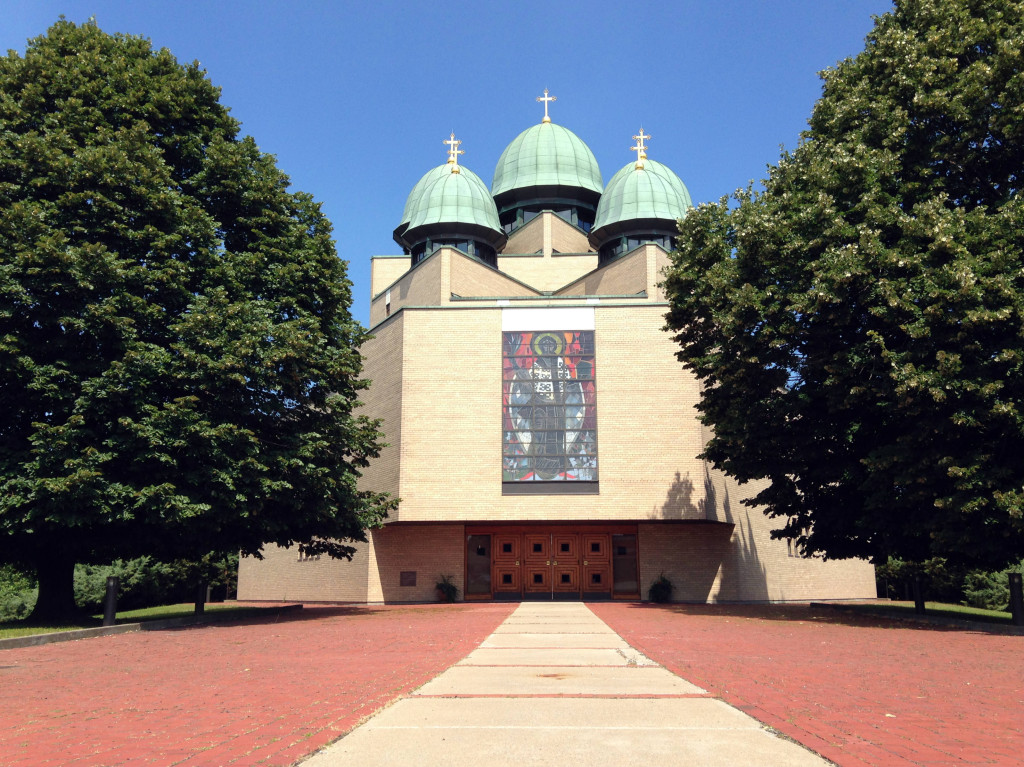
St. Josaphat’s Ukrainian Roman Catholic Church
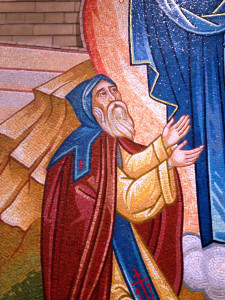
Around Rochester, NY there are a number of noteworthy landmarks when one thinks about religious architecture. St. Josaphat’s Ukrainian Catholic Church in Irondequoit is arguably one of the first that comes to mind. Its unique onion domes that tower over the businesses on Ridge Road are visually unique for the area.
It’s quite possible that the very first conversation about sacred spaces that birthed the idea for this blog in someway included St. Josaphat’s. When we first made our list of places to visit, we both agreed, ‘We have to go see that church and find out what the inside looks like!’
People began telling us, “You should go visit that Ukrainian place in Irondequoit!!’ and we assured you all that not going was not for lack of trying. If you’re not familiar with our blog, we started that list almost two years ago. We have been attempting that entire time to get a tour of the church. With the exception of the Church of Scientology, this spot may have provided the most roadblocks to getting a tour.
Luckily, both members of the Exploring The Burned Over District team are bull-headed, steadfast and not easily dissuaded.
Rochester’s Ukrainian Festival
You may also know the church because it hosts the annual Ukrainian Festival. Since 1973, it has been serving bortsch, holubsti, traditional dancing and vendors.
It also happens to be the only time a church tour is provided.
Last year we planned on attending but just days before a family emergency kept us from attending. Concerned that we’d have to wait a whole year until the next festival, we made some phone calls and sent unanswered emails to the church. I even stopped in and talked to the assistant pastor one day. We were told numerous times that the only time a tour is provided is during the festival.
Therefore, the 2013 Ukrainian Festival at St. Josaphat’s Ukrainian Catholic Church has been on our calendar for nearly a year, with the 1:00pm tour time that had been advertised on their website. We vowed nothing would stop us this year and made a set-in-stone plan to be there. We were set to finally see this mysterious, seemingly unattainable sacred site named for the historic Roman Catholic saint.
Getting To The Festival
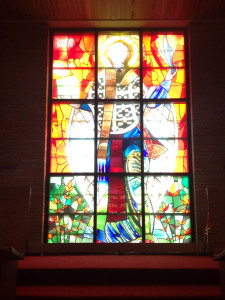
We arrived around 12:30 and went straight to the information booth. There we discovered a man also there for the tour being told the tour. We overheard him being told the tour was now postponed until 3:00p. Needless to say, we both wore looks of disappointment and then followed them immediately with thoughts of, “What do we do for over two hours!?”
The festival hadn’t gotten started yet, but a few vendors had unpacked and were ready to show their wares. We walked around looking at everything from carved wooden spoons, matryoshka dolls, painted eggs and books. There was even a stand for the Rochester Ukrainian Federal Union.
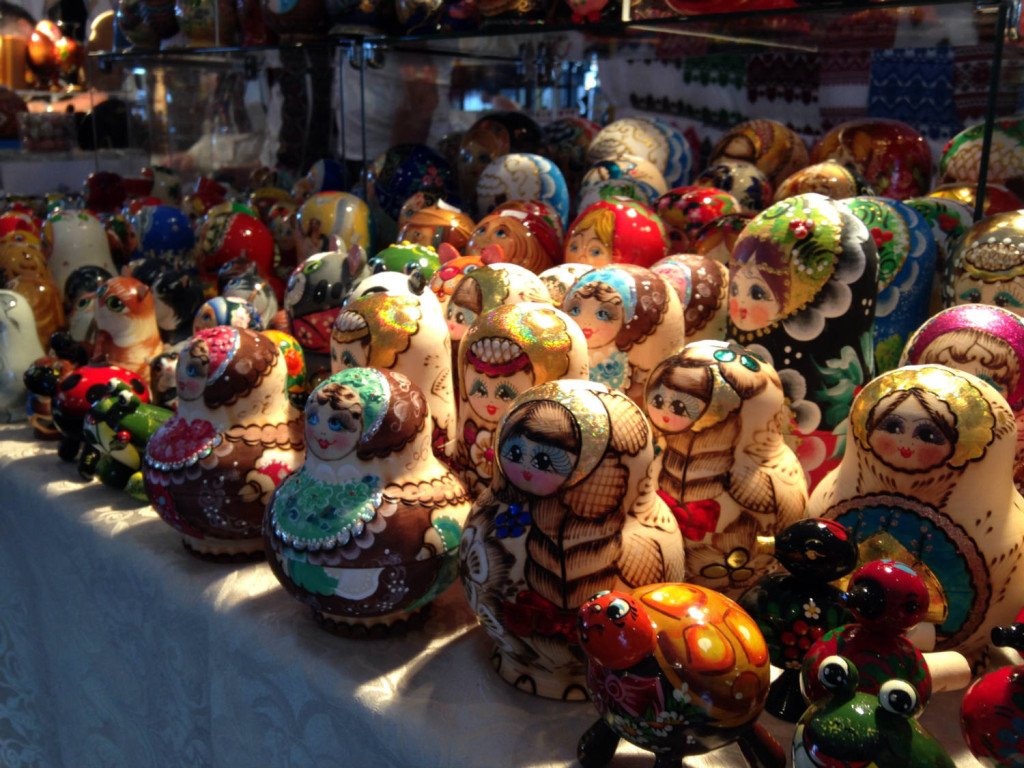
We got some lunch and smoked a couple of cigars (far from the crowd, don’t worry) and that still only brought us up until about 2:30.
At that time we made our way back to what was now a very packed festival tent. We found traditional dancing on stage, smelled Ukrainian food and saw tons and tons of people. Not wanting to miss the tour, we walked to the church doors around 2:45. There we found a couple from Geneseo who was there for the tour as well. Within minutes, we were easily surrounded by 50 people all waiting to get in for the tour. Just a few minutes before 3:00pm, the pastor walked up in to the crowd and began.
Touring St. Josaphat’s
Pastor Rt. Rev. Mitred Archpriest Philip Weiner began to tell us a bit about the church’s history, and then instructed the crowd about how the tour would work.
Essentially, he would open the doors and allow the crowd to enter a room, and then after a little while, we’d all ascend to the sanctuary together, but there wouldn’t be any official ‘tour’ with explanations of things.
If we had questions afterward, he instructed us to find him out in the crowd at the festival, or to hit up a few of the other official people around the festival.
This was somewhat disappointing because this church was indeed a Roman Catholic church, but was decorated precisely like an Orthodox church, and based on the history I explained above, I was VERY curious to know why–I had a TON of questions and we hadn’t even gotten in the door yet!
Museum And Archives
The first room we entered was somewhat of an all-purpose ‘coffee hour’ type hall, featuring a small museum off to the side in an adjacent room. Inside the museum and around the hall were glass displays of traditional Ukrainian clothing, countless photos from the congregation and school, religious iconography, bibles, and even a small shrine.
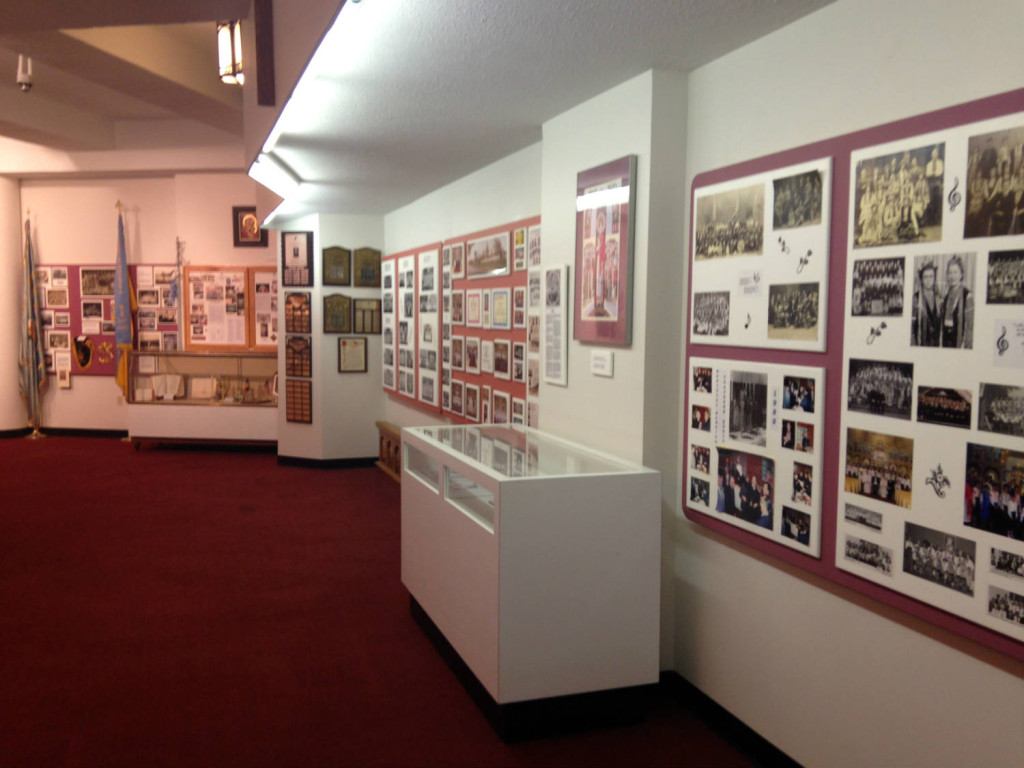
We were all allowed to walk around and take photos and mingle about and look at the items, but it was only about 15 minutes before the crowd began assembling near the stairs to the sanctuary, I presume in some naturally occurring crowd-think version of telling the priest that they were done there and ready to move on.
The entire group moved together with the direction of the Pastor and we went upstairs into sanctuary. We all entered and everyone seemed to go in different directions and began to look around. We did the same, but I was careful to hang around the pastor because people were asking questions, and he began to answer a few people. Eavesdropping proved a fairly useful tool in our education for the day.
History Of The Church
Some of the first Rochester area Ukrainian immigrants came to the area in 1903, but it wasn’t until 1908 when the Benevolent Fraternity of St. Josaphat was officially organized, and it was this group that the present day church can trace its roots back to. They built the very first location of the church in 1910 on Remington Street, but like so many other churches at that time, they outgrew the space almost immediately, and the group moved to a new church on Hudson Ave four years later.
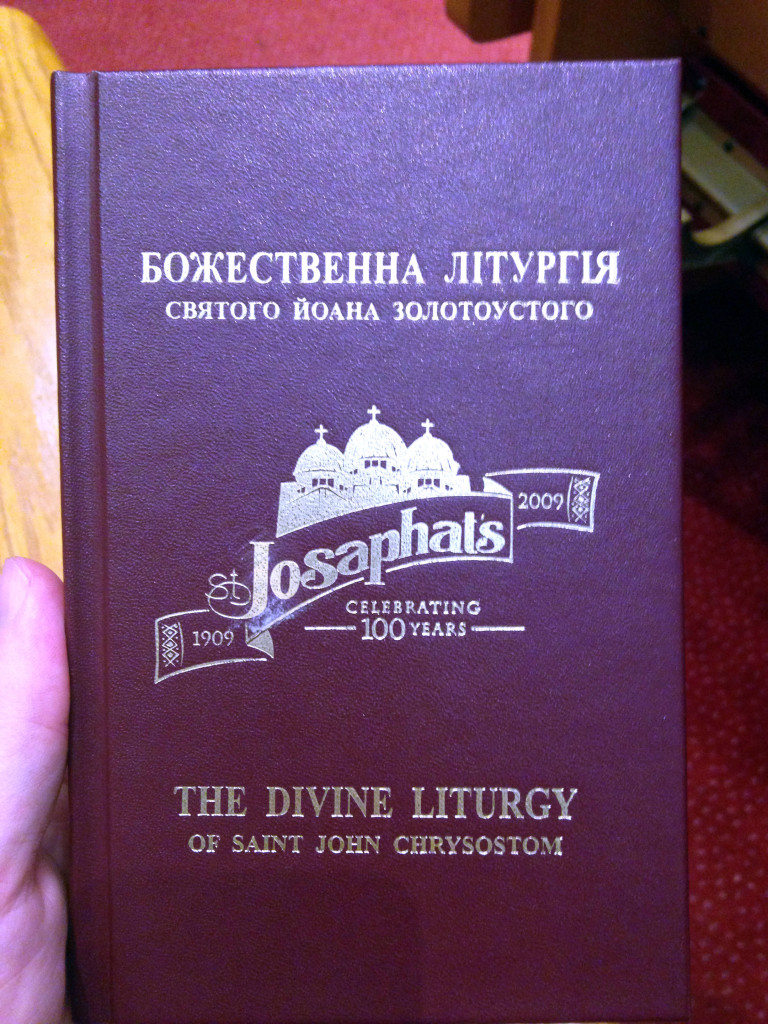
In 1941 a school was started, which grew in its numbers for decades, until it began declining in enrollment and ultimately being closed in 2001. It was in 1979 that the group moved to its current home on Ridge Road and Carter Street.
What’s interesting about the sanctuary at St. Josaphat’s, is that it’s decorated with incredible, colorful mosaics of very Orthodox looking artwork.

Orthodox art usually includes human depictions that are somewhat ‘cartoony’ and have longer noses and wider eyes than a more realistic depiction would. Additionally, there is a full iconostasis on the altar–usually a telltale sign that you are in an Orthodox sanctuary. The iconography all screamed to visitors that we were standing in an Orthodox Christian church, but St. Josaphat’s is indeed a Roman Catholic order. The decoration serves as a nod to those whose roots are steeped in Ukrainian Orthodoxy, but have embraced the Roman Catholic Church after the change discussed above.
People began sitting in pews and looking around, and I suspect that most of that was because looking at an iconostasis is like looking at a wall of art in a museum. Sitting and gazing seemed perfectly appropriate and I joined those folks.
Wrapping Up The Tour
The pastor still was answering some questions, but sort of began to speak a little louder in his responses so that nearby folks would hear too. Suddenly, everyone was seated near him and now he was officially taking questions. I felt a little badly, since he started by saying he specifically didn’t want to do so, but, I didn’t feel that bad, we had been waiting OVER a year!
We started throwing out some questions until he finally said, ‘Where are you guys from? You’re asking a lot of questions!’ I suspected that he may have appreciated our inquisition at a time when it were more appropriate, but we tend to take advantage of a situation when we’re in it. Everyone sort of started filing out as we realized our last minute question-and-answer session was being busted up, and the smell of Ukrainian festival food grabbed us by the nostrils and floated us back to the outside tent.
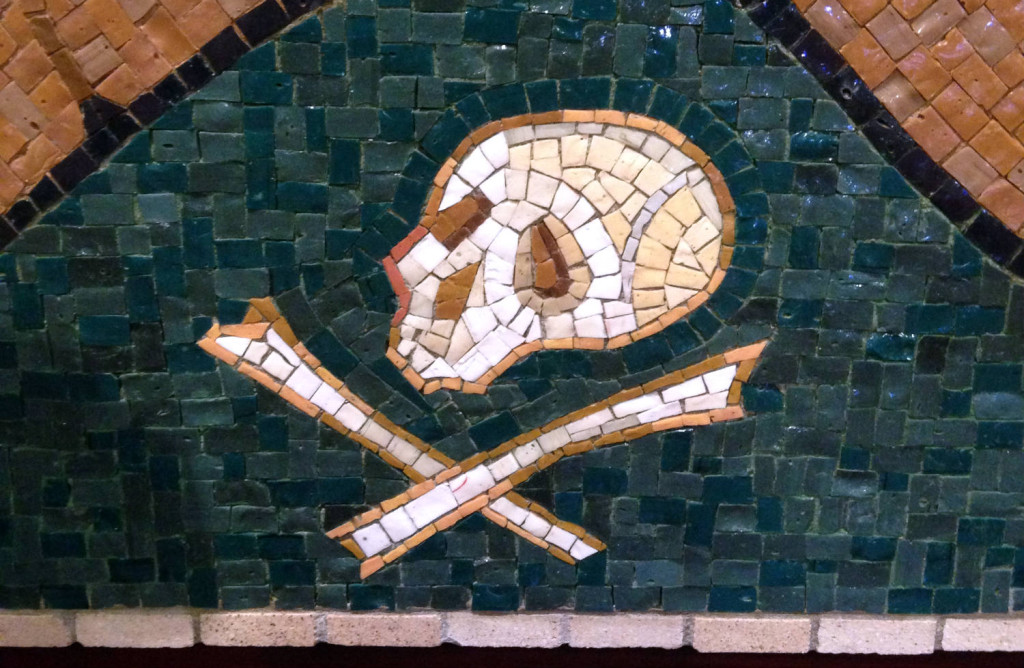
It took us a heck of a long time and a lot of work to be able to see the inside of St. Josaphat’s Ukrainian Roman Catholic Church, but it was totally worth the wait. If you find yourself wanting to see the inside, it was actually asked about why the church is never available for tours, and we were told, ‘It is! Every Sunday morning for liturgy!’
Get yourself there on a Sunday morning to hear either a Ukrainian or English mass, or you can do like we did and wait until next August!
Additional Reading and Sources
St. Josaphat’s Official Webste
Josaphat Kuntsevych on Wikipedia
*This post previously appears on www.ExploringTheBurnedOverDistrict.com
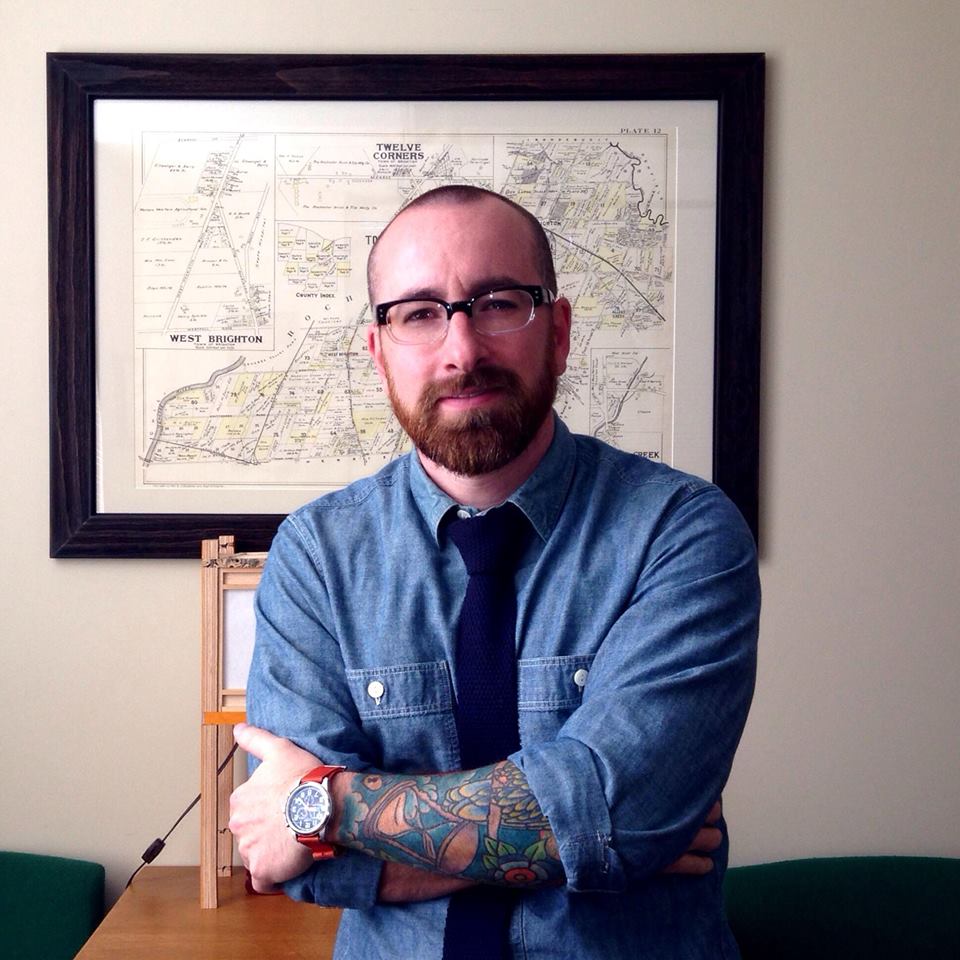
Chris Clemens is the Founder/Publisher of Exploring Upstate. From his hometown in Rochester, he spends as much time as possible connecting with the history, culture, and places that make Upstate New York a land of discovery. Follow him on Twitter at @cpclemens

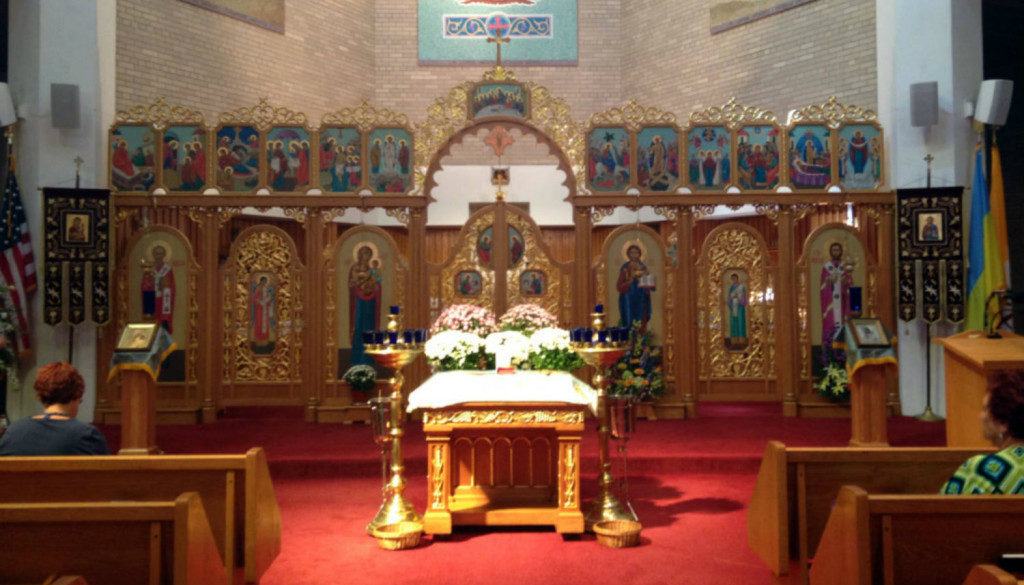





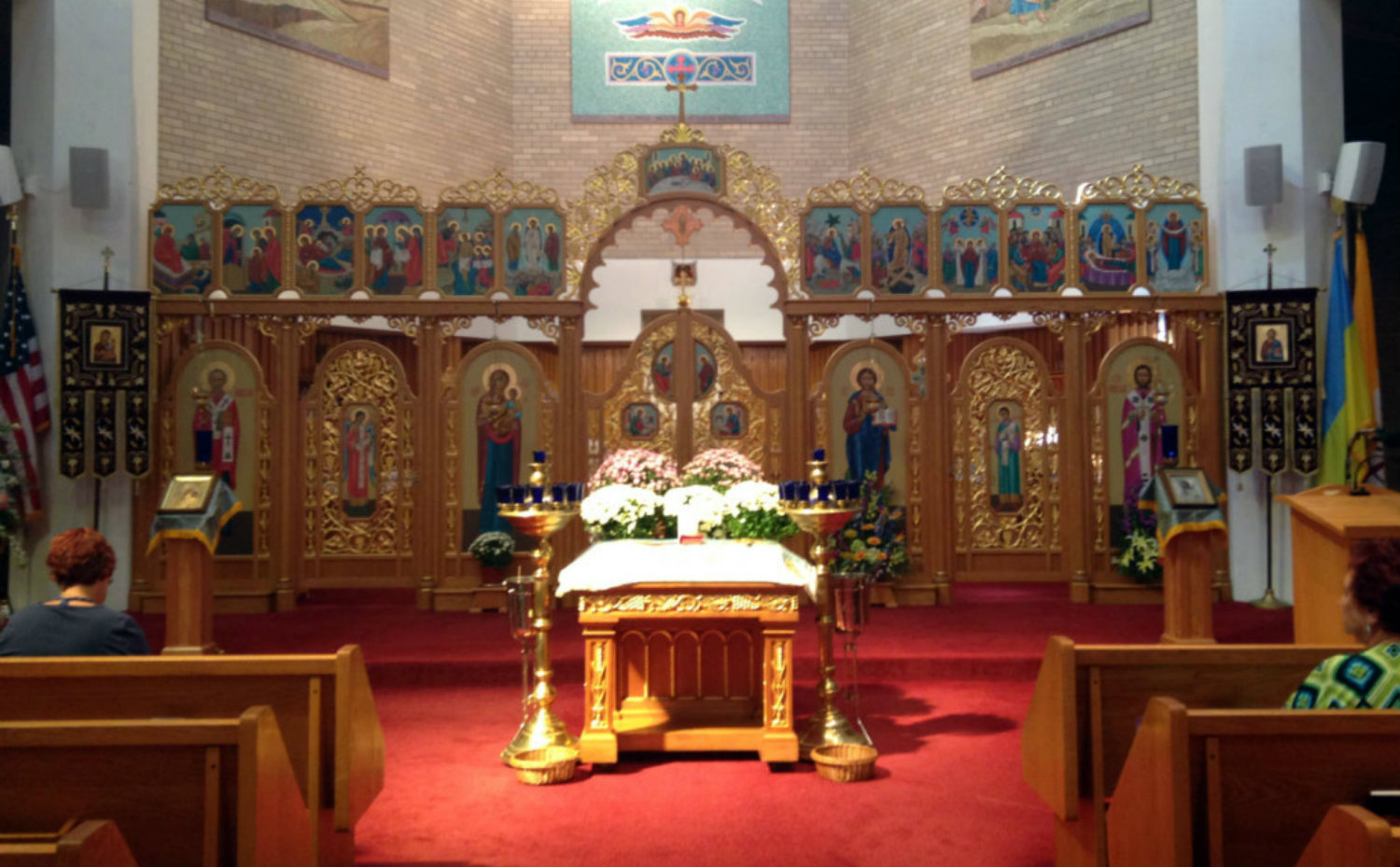



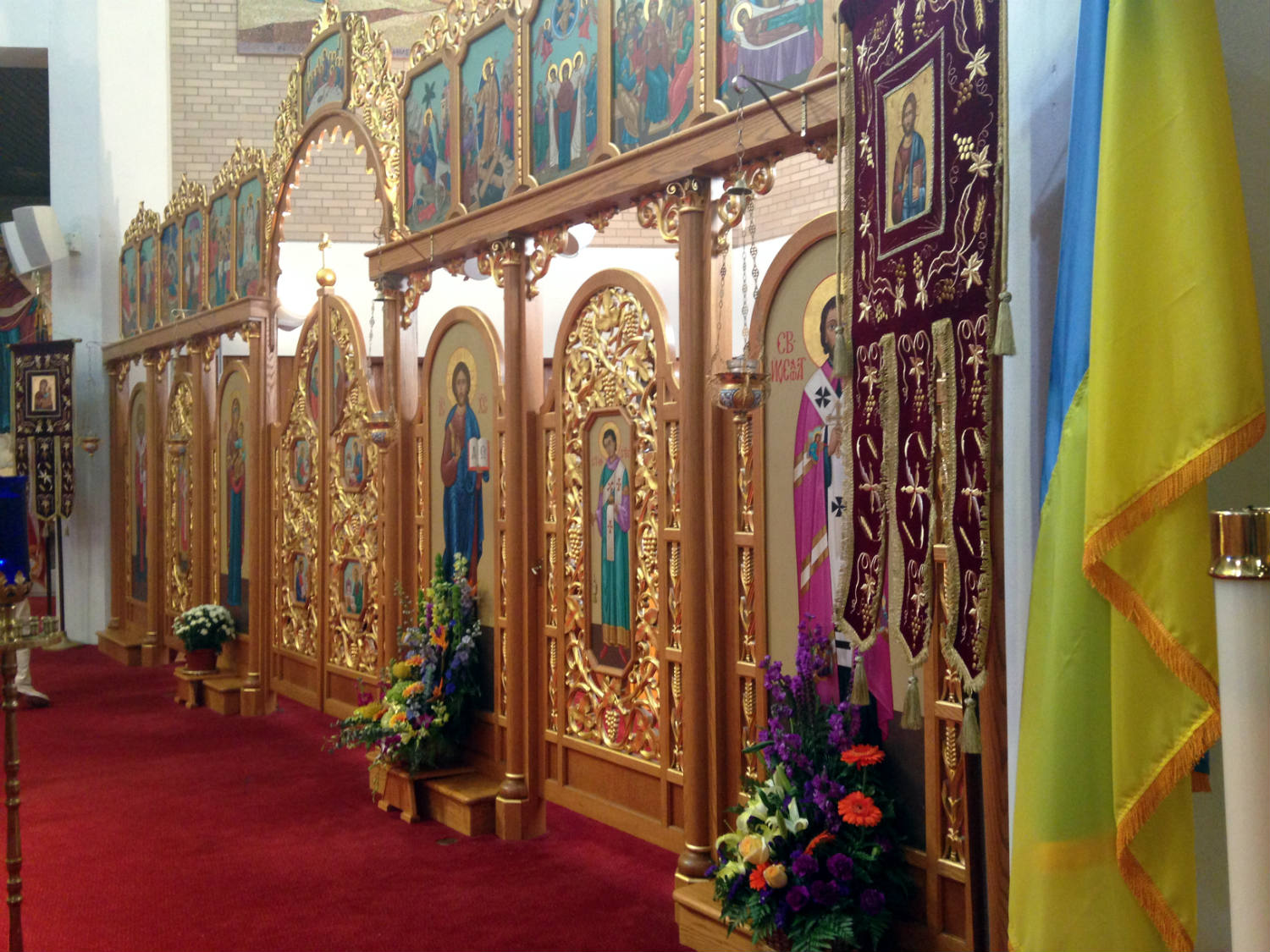


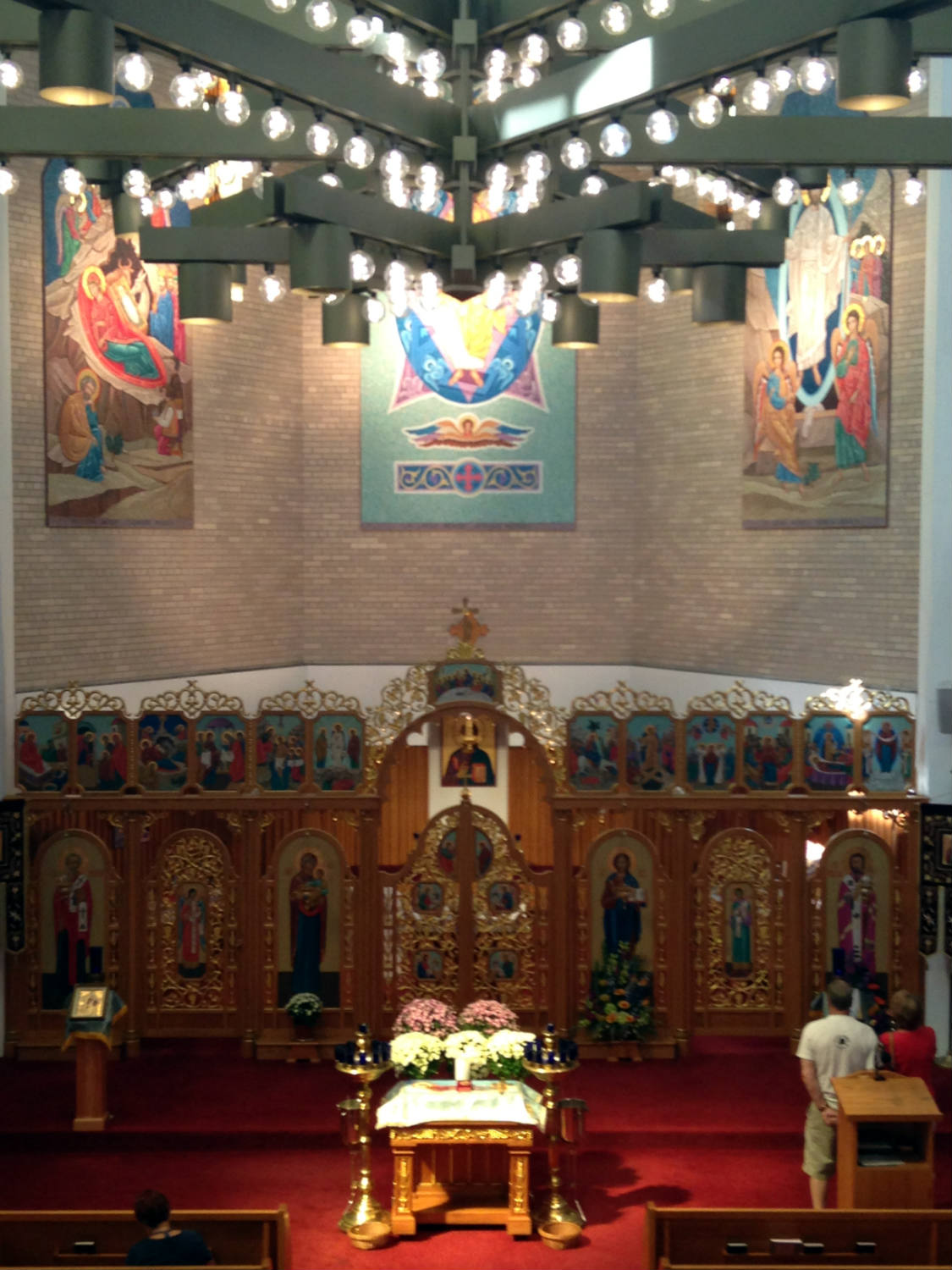










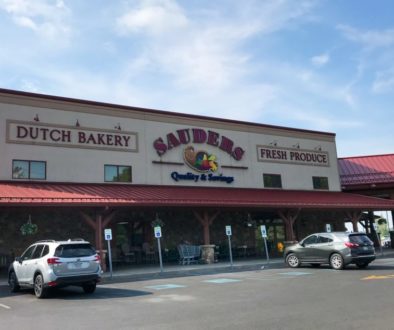
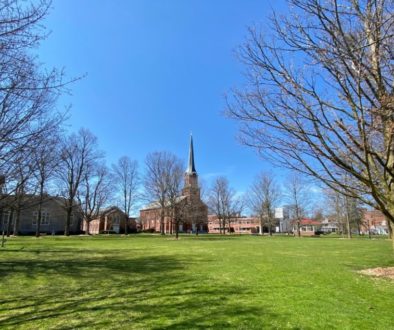
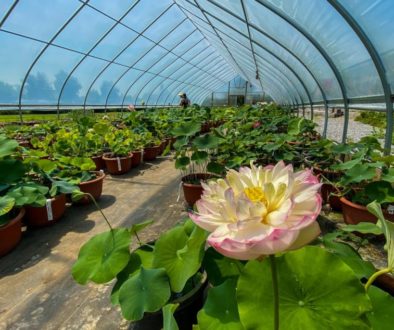
September 2, 2013 @ 10:03 am
Will you be going to Epiphany Ukrainian Church on Carter Street too?
September 3, 2013 @ 10:36 am
Hi Jim!
We don’t know too much about it, but we did drive by it to check it out that day. It’s been added to our list of ‘Research These Places”. Funny how everytime we check off one place, two more get added!
September 2, 2013 @ 11:43 pm
I am used to hearing that about our church, “It’s a rare treat to see it on a tour”, to which I always exclaimed – “We have two services a week, ALL ARE WELCOME!!”
Thank you for this”tour” I see its beautiful, gleaming gold crosses every day, the unique architecture adds to our town’s appeal. Your picture of the Matryoshka dolls is fantastic. What a lovely quest you’ve been taking us on.
September 3, 2013 @ 10:43 am
So glad a member of the parish landed on this! Glad you enjoyed it Susan.
While I love the idea that ‘all are welcome’ for mass, tours give a great way to provide outreach and awareness that attending a mass wouldn’t. Many places of worship are nearly museums, and even set aside from the religious beliefs themselves, are often interesting to people. We’ve found that tours are a great way to introduce someone who might be put off by attending a religious service to the concepts and beliefs, and exposing people to a culture they might not be aware of. We’ve attended masses where we’ve been in a sea of people and felt a little lost, a smaller group interaction is a great way for congregations to connect with the outlying community. In fact–that’s why we do this blog, and we’re really glad to have you as a reader!
September 4, 2013 @ 1:11 am
Good for you two for persevering!! These pictures are beautiful and the article very interesting. Thanks for the history lesson – most enjoyable.
January 3, 2014 @ 10:54 am
Thanks Eleanor!!
May 24, 2016 @ 5:08 pm
You are referring to Ukraine as “the Ukraine” in your text about the history of St. Josaphat. It is not actually correct. It is simply Ukraine. You don’t say the England or the France or the Poland. One would say “I am going to Ukraine”, not ” I am going to the Ukraine.”
Nice article, but as Father Phil has said, you can come anytime on Sunday during mass and see the interior of the church.
October 20, 2017 @ 10:24 pm
This is interesting as my Great Grandparents were founding members of the church along with other organizations of the Ukrainian community. The church on 349 Remington Street was St. Josaphat Ukrainian Greek Catholic. I have a book, “Historical Documentary of the Ukrainian Community of Rochester, NY” written by James D. Bratush in the 1960s. I have tried to figure out when it changed but newer documents aren’t easily found. I called the church several years ago but she didn’t know much.
October 20, 2017 @ 11:05 pm
Hi Gretchen,
You might also try the Rochester Historical Society for information like you’re seeking. You will probably have a better chance of getting a response at least. Hope you’re able to find out more!
March 19, 2018 @ 9:51 am
sorry, I have no comments. I would like some help if possible. I have taken st. josaphat as my patron saint. can you give me any advice on getting an icon of him, if one exists. thank you for any advice you can give me.
the church is beautiful.